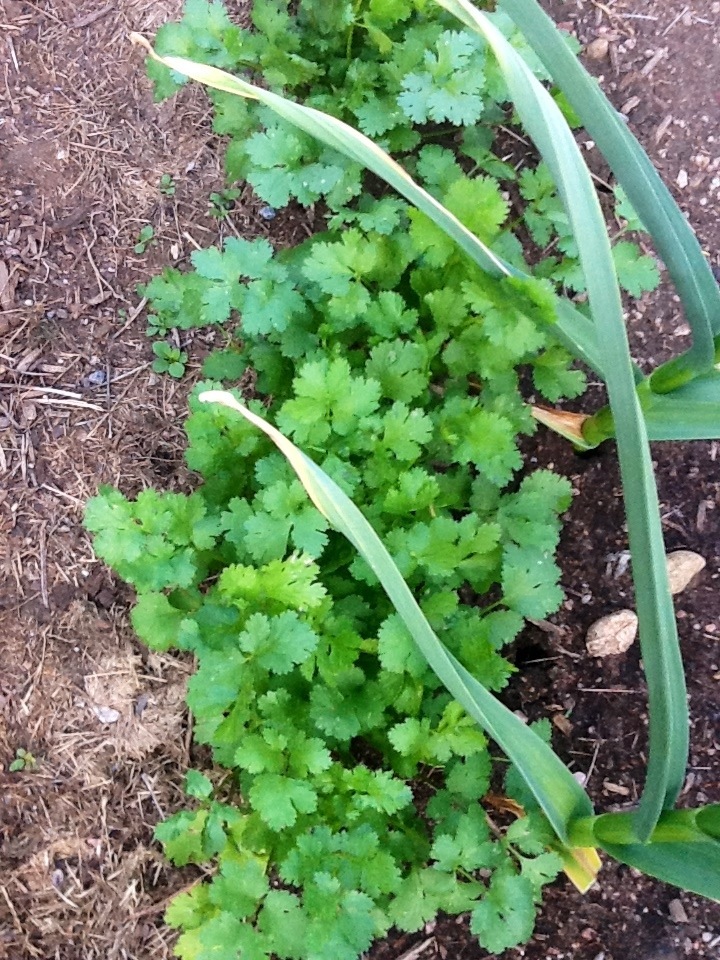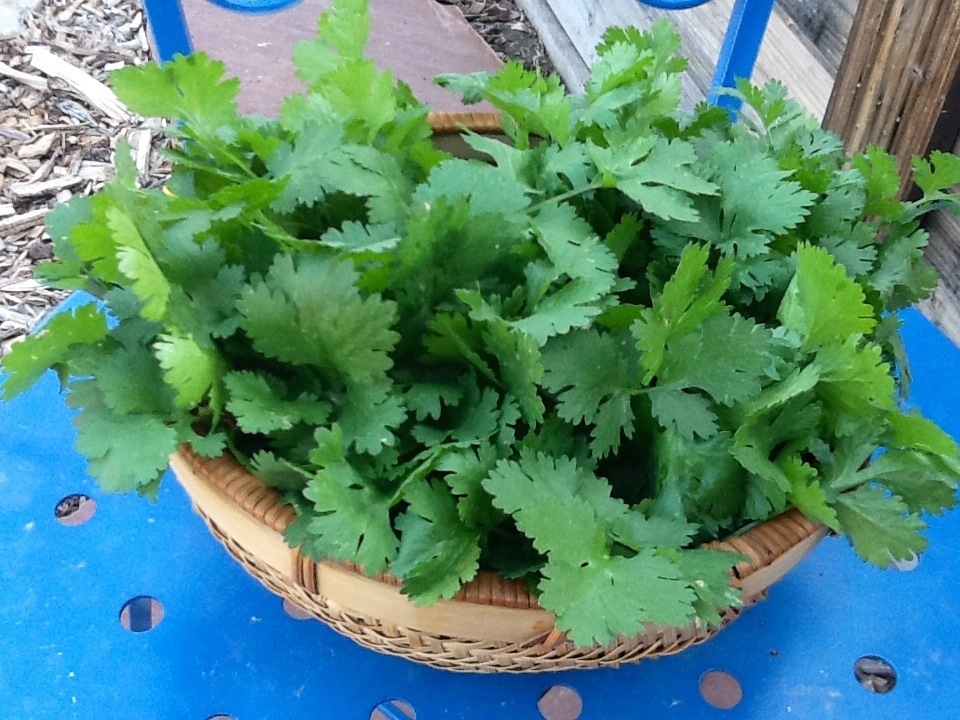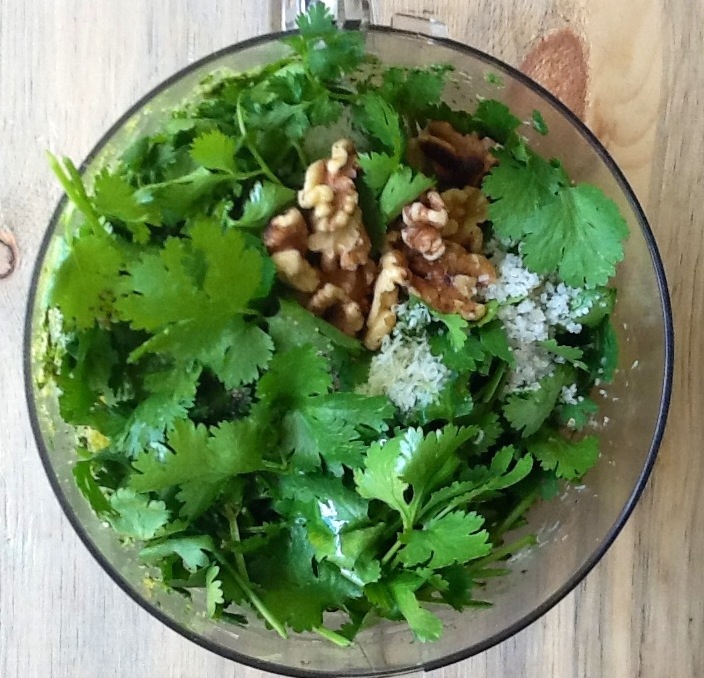Cilantro, not just for salsa
After high school, I took several years and did some exploring. These days, this kind of exploring has a name, ‘the gap year’. Well, my gap was much longer than a year. For a while I spent time working on organic farms. While living on a farm in Virginia, one of my many jobs was to harvest cilantro in the early morning. It was a pretty easy task; gently breaking the base of each stem and neatly bundling the delicate leaves together into small bouquets. During those early morning hours, I did not appreciate all the qualities this herb has to offer. In fact, several years passed before I began enjoying it again.
Cilantro is actually the name given to the leaves of a coriander plant. It looks similar to parsley, but is a little more succulent and very aromatic. Cilantro doesn’t store very well, so either pick it shortly before using or wrap it in a paper towel and refrigerate in a plastic bag. I leave the top of the bag slightly open. These tricks help extent it’s shelf life. After flowering, it produces the beloved coriander seeds so popular in Indian recipes. This week, my garden is producing gorgeous cilantro.
Cilantro Pesto Ingredients:
1/4 cup chopped walnuts
1 tablespoon fresh garlic, minced
1 bunch cilantro
2 tablespoons or more pecorino sheep cheese, shredded
1 teaspoon salt
1 teaspoon pepper
1 teaspoon lemon zest
1 tablespoon lemon juice
1/4 cup extra virgin olive oil
Directions:
Combine all ingredients in a food processor and blend. To store, put in glass jars leaving space for expansion and freeze. Remember to label the jar.



